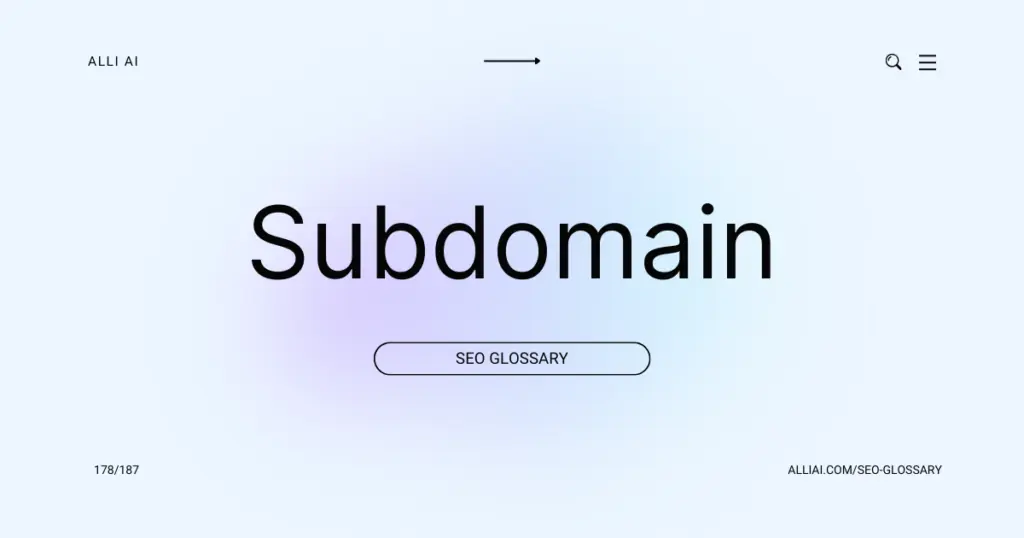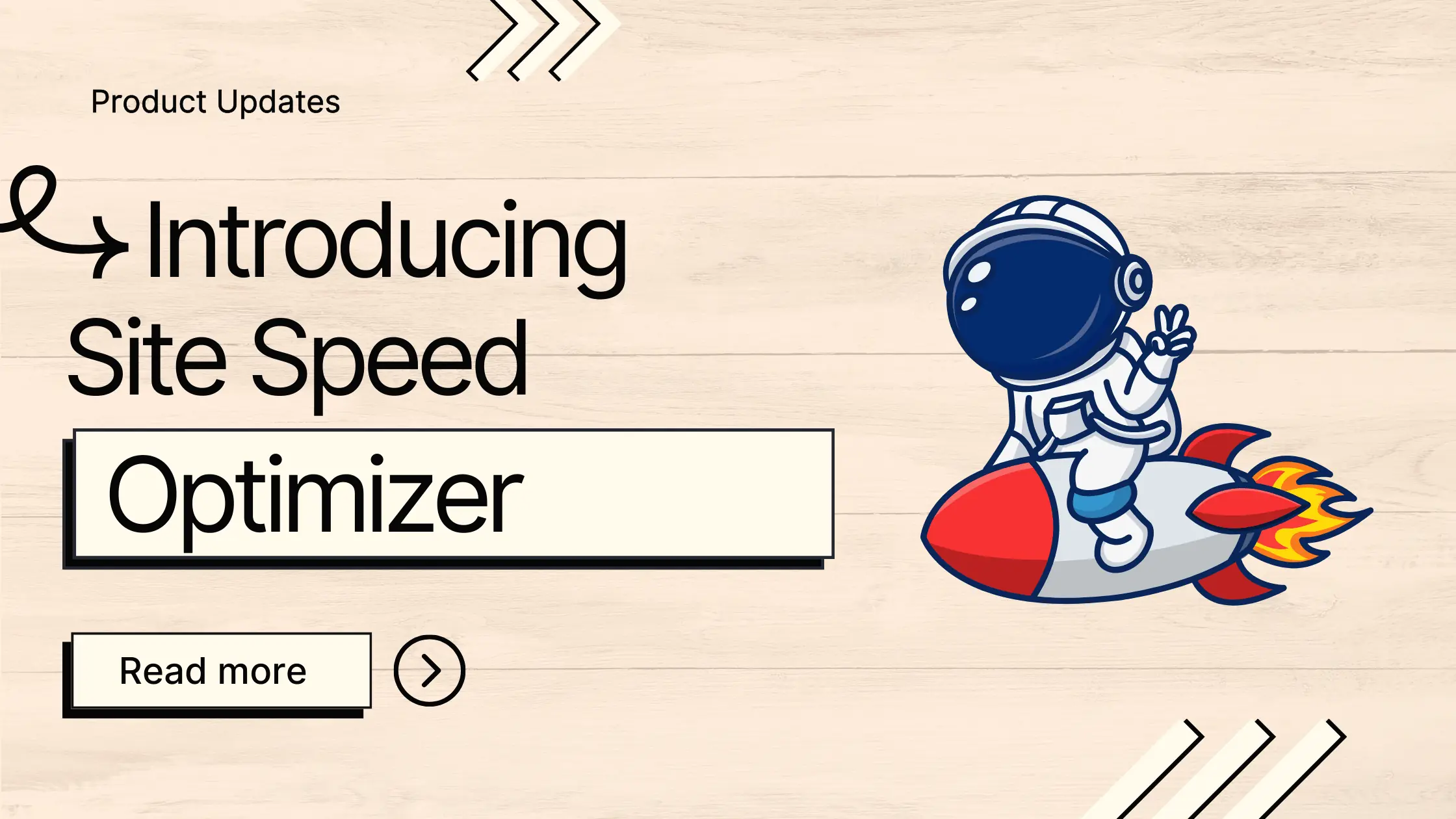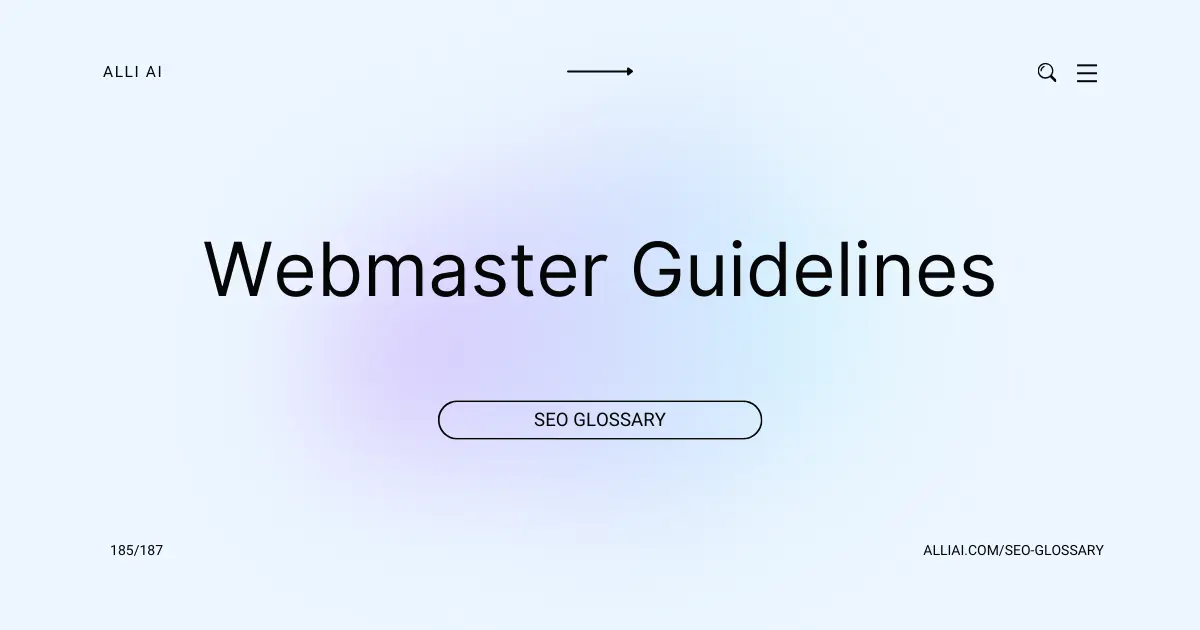What Does Subdomain Mean?
A subdomain is a subsection of a main website, used to organize or separate content into distinct sections. For example, if the main website is “example.com,” a subdomain could be “blog.example.com” where the “blog” part is the subdomain.
Where Does Subdomain Fit Into The Broader SEO Landscape?
Subdomains can act as distinct entities in SEO, allowing you to organize different sections or types of content that may not be directly related to the main site’s core themes. This organizational structure can be beneficial for SEO in cases where a business wants to expand into new niches or geographical markets without diluting the relevancy of the main website’s content.
Search engines often treat subdomains almost like separate websites, meaning they can rank independently of the root domain. This is advantageous when targeting specific keywords or audiences, as the subdomain can be fully optimized around this particular focus, potentially increasing its chances of ranking well for related queries.
However, subdomains can also dilute domain authority because inbound links to the subdomain do not directly contribute to the main domain’s authority in the same way that they would if the content were housed in a subdirectory. This separation means that efforts to build authority may need to be doubled up, as each subdomain needs to establish its credibility and link profile independently.
Cross-domain content strategies, such as linking between subdomains and the main domain, can help to mitigate some of the potential downsides by passing authority and relevance between them. Strategic use of subdomains can offer targeted opportunities to reach specific user bases or address particular topics, benefiting the overall SEO by aligning closely with user intent and improving user experience.
Real Life Analogies or Metaphors to Explain Subdomain
A subdomain is like a separate room in a large house. The whole house is your main website, and each room (subdomain) serves a different purpose but is part of the same overall structure. Just as you might have a kitchen for cooking, a living room for relaxing, and a bedroom for sleeping, you can have subdomains for different functions or topics, all under the roof of your main domain.
How the Subdomain Functions or is Implemented?
A subdomain functions as a separate section of a larger domain in the Domain Name System (DNS) hierarchy. Here’s a breakdown of how it is implemented:
1. Creation: A subdomain is created by adding a new DNS record for the subdomain’s prefix in the domain’s DNS zone file. For instance, if the main domain is `example.com`, a subdomain could be `blog.example.com`. This involves adding a DNS record with the name `blog` pointing to either an IP address or another hostname.
2. DNS Configuration: The DNS record for the subdomain typically includes an A record (for IPv4 addresses) or AAAA record (for IPv6 addresses) that points to the IP address where the subdomain’s content is hosted. Alternatively, a CNAME record can be used to map the subdomain to another domain name.
3. Propagation: Changes to DNS records need to propagate across the Internet’s DNS servers. This propagation can take anywhere from a few minutes to 48 hours. During this time, the subdomain may not be immediately accessible globally.
4. Hosting Setup: The subdomain can be configured to point to a specific directory within the hosting environment, or it can be set up to point to a different server altogether. Web hosting control panels like cPanel often provide easy management tools for subdomains.
5. SSL Certificates: If HTTPS is required for the subdomain, an SSL certificate needs to be issued and configured for the subdomain specifically. This can be a wildcard certificate for all subdomains or a separate certificate just for the specific subdomain.
6. Usage: Subdomains can be used independently of the main domain, functioning as separate websites, or they can redirect to parts of the main website or act as a simple URL redirection.
By properly configuring and managing these aspects, subdomains function as distinct entities within the larger domain, allowing organizations to organize and structure their online presence effectively.
Impact Subdomain has on SEO
1. Search Engine Recognition: Subdomains are seen by search engines as separate entities. This means that they can be individually ranked and indexed, sometimes creating an opportunity to dominate search results with multiple listings from the same brand or entity.
2. Keyword Targeting: By using keyword-rich subdomains (e.g., product.yoursite.com), you effectively signal search engines about the specific focus of that part of your website, which can boost rankings for certain keywords.
3. Link Equity: Backlinks to a subdomain can directly benefit the subdomain’s SEO by increasing its domain authority; however, this does not directly increase the main domain’s authority. The link equity is typically split unless configured to share some SEO benefits through cross-domain canonical tags or redirects.
4. Site Structure and Segmentation: Subdomains act as completely separate websites, allowing you to organize large sites by theme or function without affecting the performance of the main domain. This segmentation can lead to improved user experiences as content is more targeted and relevant.
5. International SEO: Subdomains are useful for geotargeting. Using country-specific subdomains (e.g., uk.yoursite.com, de.yoursite.com) can help in serving localized content, improving user experience and search engine rankings in those specific regions.
6. Potential Risks: The use of subdomains can dilute brand identity if not managed wisely. From an SEO perspective, having multiple subdomains can divide your inbound links, potentially diluting the ranking power compared to having a single, stronger domain. Furthermore, Google’s algorithms might recognize content across subdomains as duplicate content if not differentiated enough, negatively impacting SEO.
7. User Experience: For users, subdomains can enhance navigation and highlight specific areas of interest within a larger site, potentially speeding up the browsing experience and improving satisfaction. However, too many subdomains can confuse visitors and dilute the overall brand message.
SEO Best Practices For Subdomain
1. Choose a relevant subdomain name that includes a primary keyword.
2. Implement SSL on the subdomain to enhance security and trust.
3. Ensure the subdomain is included in the sitemap and submitted to Google via Google Search Console.
4. Use a consistent structure that mirrors your main domain to aid user navigation and search engine understanding.
5. Optimize title tags, meta descriptions, and headers with relevant keywords for the subdomain’s content.
6. Employ a mobile-first design approach to make the subdomain responsive and mobile-friendly.
7. Improve page load speed by compressing images, leveraging browser caching, and optimizing server response time.
8. Create high-quality, relevant content that addresses the needs of your audience and includes keywords appropriately.
9. Build internal links from your main domain to the subdomain and vice versa to distribute authority and aid in site navigation.
10. Acquire backlinks to the subdomain from reputable external sites to increase domain authority.
11. Track and analyze the traffic to the subdomain with analytics tools to continually refine and improve your SEO tactics.
Common Mistakes To Avoid
1. Diluted Domain Authority: Search engines may treat subdomains as separate entities from the main domain, which can split the domain authority and weaken overall SEO impact.
Solution: If content on a subdomain can logically exist on the main domain, integrate it to consolidate authority and enhance link equity.
2. Duplicate Content Issues: Similar content on subdomains and the main domain can lead to duplicate content penalties.
Solution: Use canonical tags to indicate the primary content source or consider content differentiation strategies.
3. Inconsistent Cross-Linking: Poor linking between subdomains and the main domain can lead to isolated content and hinder user navigation and search engine crawling.
Solution: Implement strategic internal linking to ensure content across subdomains and main domains is interconnected where relevant.
4. Neglected Subdomains: Subdomains, once created for specific reasons, can get forgotten, leading to outdated content and security vulnerabilities.
Solution: Regularly review and update or decommission unneeded subdomains.
5. SEO Strategy Misalignment: Subdomain content that does not align with the main domain’s SEO strategy can create conflicting signals to search engines.
Solution: Ensure that all subdomains follow a unified SEO strategy that complements the overall goals of the main domain.
6. Subdomain Overuse: Creating multiple subdomains can fragment user experience and complicate site architecture.
Solution: Only use subdomains when there is a clear, logical reason that benefits user experience and supports business objectives.
7. Tracking Challenges: Analyzing traffic and user behavior across subdomains can be complex if not configured correctly in analytics platforms.
Solution: Properly configure Google Analytics or other tools to accurately track user journeys across subdomains and the main domain.
8. Indexation Limits: Search engines have crawl budgets, and too many subdomains can exhaust these limits before important pages are indexed.
Solution: Prioritize key pages for crawling and indexing, and control crawl through the use of robots.txt and sitemap files.
9. Hosting Misconfigurations: Incorrect DNS or server settings for subdomains can lead to accessibility issues or delays in loading times.
Solution: Regularly monitor and optimize hosting configurations to ensure subdomains are as responsive and reliable as the main domain.
10. Security Risks: Subdomains may be overlooked in security protocols, making them vulnerable to attacks.
Solution: Apply consistent security measures across all domains and subdomains, ensuring they all adhere to best practices.






